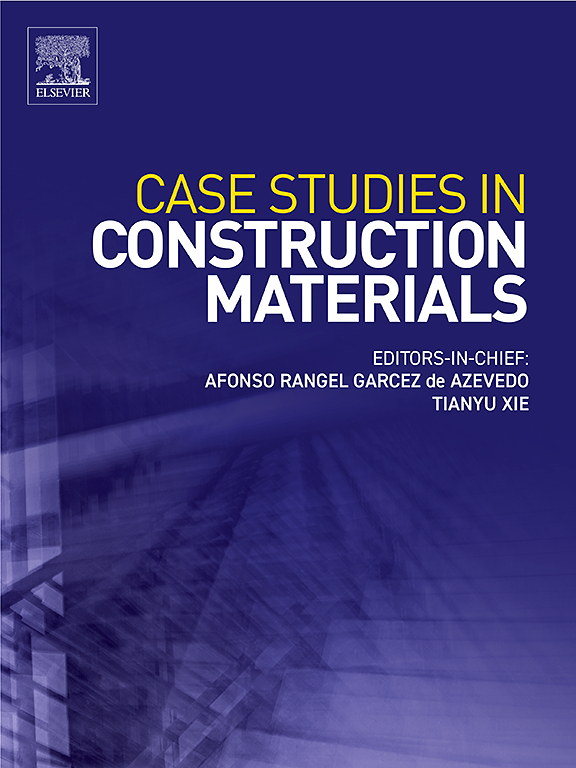Low-velocity impact and post-impact flexural behavior of novel concrete seawall panels reinforced with composite GFRP bars
IF 6.6
2区 工程技术
Q1 CONSTRUCTION & BUILDING TECHNOLOGY
引用次数: 0
Abstract
Glass-Fiber-Reinforced Polymer (GFRP) bars can be used to reinforce concrete seawall structures, but there is a notable gap in the existing research regarding seawall’s impact behavior with GFRP bars. This study designed a novel GFRP-reinforced concrete seawall panel reinforced with composite GFRP bars and comprehensively analyzed their low-velocity impact behavior caused by vessel collisions for all impact characteristics: impact force, acceleration, mid-deflection, energy absorption, and strains. Furthermore, three-point flexural test evaluated the post-impact flexural behavior of the panels. The findings indicate that GFRP-reinforced seawall panels can withstand impact forces up to 1.5 m drop height (4415 J) without local and scabbing failure. The mid-deflection, total energy absorption (87 %), and the proportion of energy absorbed by GFRP bars increased with increasing drop height, whereas the ratio of energy absorption absorbed by concrete decreased significantly after 1.5 m. None of the GFRP bars ruptured even at the highest impact energy (5886 J), with maximum measured strain being 72 % of the GFRP-bar rupture strain. In post-impact, seawall panels retained 67 % of their residual flexural strength. The experimental results were verified with the modified single-degree-of-freedom (SDOF) equation. The findings enhance understanding on the relationship between impact energy and impact characteristics of GFRP-reinforced seawall panels.
GFRP复合筋新型混凝土海堤板低速冲击及冲击后弯曲性能
玻璃纤维增强聚合物(GFRP)筋可以用于混凝土海堤结构的加固,但现有的研究中对GFRP筋对海堤的冲击性能研究存在明显的空白。本研究设计了一种新型GFRP筋加固GFRP筋混凝土海堤板,综合分析了其在船舶碰撞下的低速冲击行为,包括冲击力、加速度、中挠度、能量吸收、应变等各方面的冲击特性。此外,三点弯曲试验评估了面板的冲击后弯曲性能。研究结果表明,gfrp加固海堤板可以承受高达1.5 m落差(4415 J)的冲击力,而不会出现局部破坏和结痂破坏。GFRP筋的中挠度、总能量吸收(87 %)和吸收能量的比例随着落差高度的增加而增加,而混凝土吸收能量的比例在1.5 m后显著下降。即使在最高冲击能量(5886 J)下,GFRP杆也没有破裂,最大测量应变为GFRP杆破裂应变的72 %。在冲击后,海堤面板保留了67 %的剩余抗弯强度。用改进的单自由度方程对实验结果进行了验证。研究结果加深了对gfrp加固海堤板冲击能量与冲击特性之间关系的认识。
本文章由计算机程序翻译,如有差异,请以英文原文为准。
求助全文
约1分钟内获得全文
求助全文
来源期刊

Case Studies in Construction Materials
Multiple-
CiteScore
7.60
自引率
19.40%
发文量
842
审稿时长
63 days
期刊介绍:
Case Studies in Construction Materials provides a forum for the rapid publication of short, structured Case Studies on construction materials. In addition, the journal also publishes related Short Communications, Full length research article and Comprehensive review papers (by invitation).
The journal will provide an essential compendium of case studies for practicing engineers, designers, researchers and other practitioners who are interested in all aspects construction materials. The journal will publish new and novel case studies, but will also provide a forum for the publication of high quality descriptions of classic construction material problems and solutions.
 求助内容:
求助内容: 应助结果提醒方式:
应助结果提醒方式:


